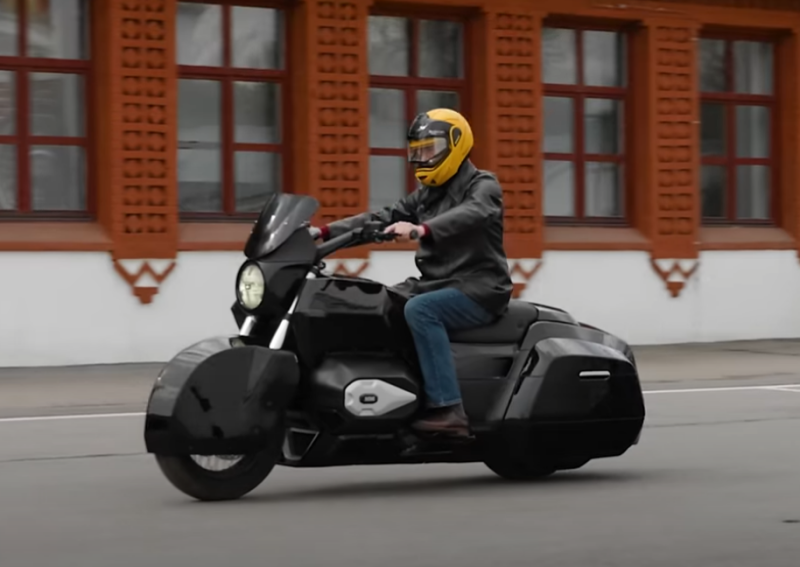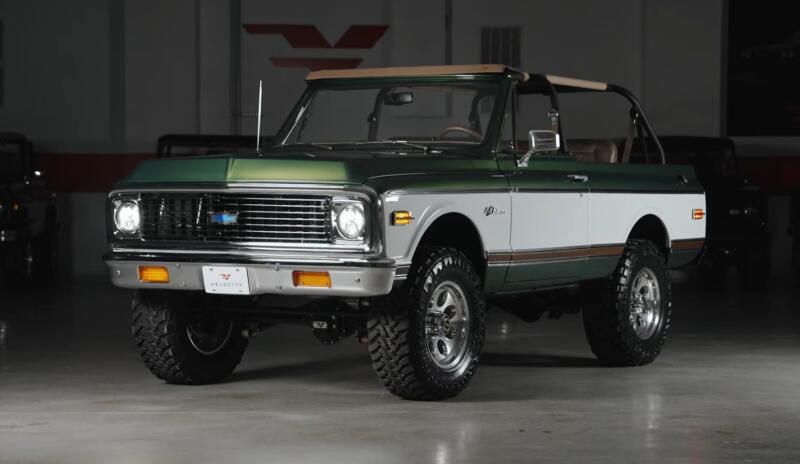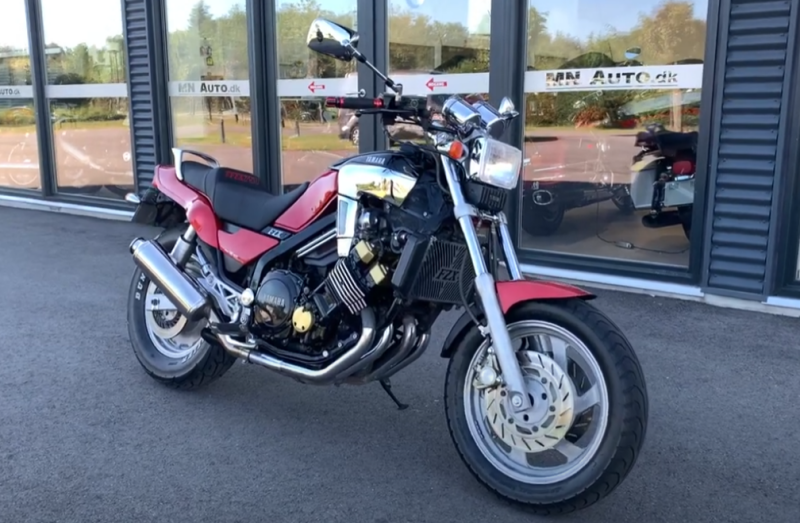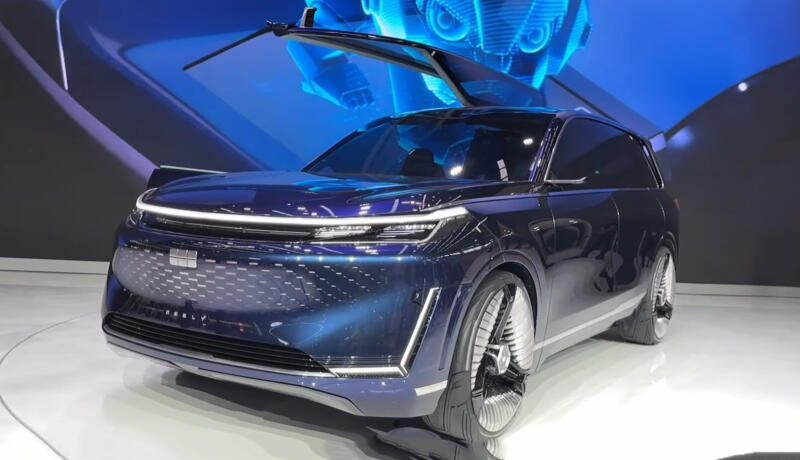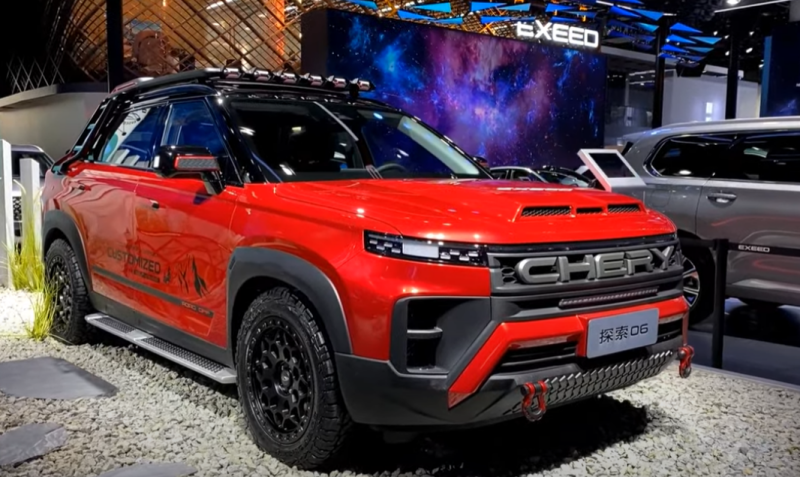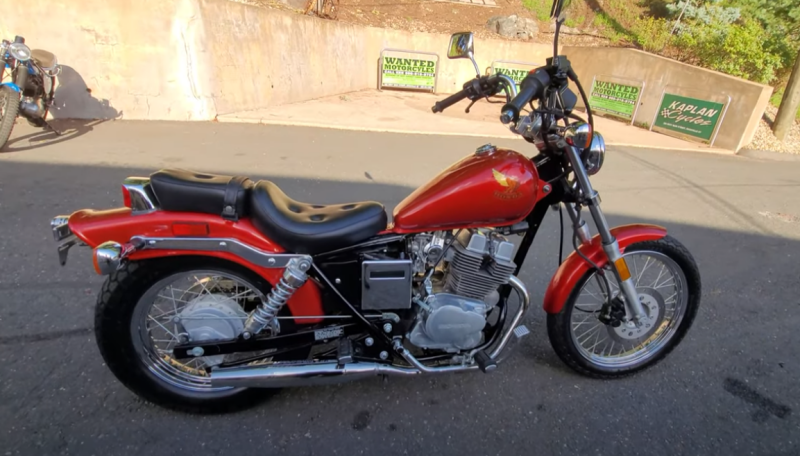The premiere of the NSX supercar (New Sportscar eXperimental) took place in February 1989 at the Chicago Auto Show. Although originally designed to compete with the Ferrari 328, the NSX was forced to compete with the 348 Ferrari 1989: the last V8 sports car from Maranello designed during Enzo Ferrari's lifetime. The Honda NSX, although inferior to the Ferrari 348 in terms of engine performance, turned out to be more dynamic than the Italian supercar: the NSX drove through the “quarter” in 13.1 seconds, and the 348 in 14.4!
 Presentation of the Honda NSX. Photo: Youtube.com
Presentation of the Honda NSX. Photo: Youtube.comHowever, Honda did not set itself the goal of surpassing Ferrari in terms of technical characteristics. The basis of the Japanese supercar concept was the convenience of daily use, as well as reliability. Therefore, the NSX was equipped with anti-lock brakes, power steering and traction control. And also power windows and air conditioning! Unthinkable, by the standards of Italian supercars, luxury!
Engine
Designed specifically for the Honda NSX, the C30A is a 24-valve V6 engine with variable valve lift (VTEC) and electronic control. It should also be mentioned:
✅ forged pistons
✅ titanium cranks
✅ compression ratio 10,2:1
✅ PGI electronic multipoint fuel injection
The Honda C30A engine developed 270 horses at 7100 rpm and provided 285 Nm. torque. By the way, it was the NSX that became the first production car in the world to be equipped with an electronic accelerator pedal (Drive By Wire), instead of a mechanical drive. Now, to change the throttle position, an electronic signal was used from the sensor in the gas pedal. In Formula 1, this technology will appear in 1992, on the McLaren MP4 / 7A Honda.
 Honda NSX interior. Photo: Youtube.com
Honda NSX interior. Photo: Youtube.comThe Honda NSX was equipped with a five-speed manual transmission and a limited-slip differential, but a four-speed automatic transmission could be ordered as an option. This option had only one drawback: the engine developed 18 horsepower less.
Body
The New Sportscar eXperimental is also the world's first mass-produced car with an all-aluminum monocoque body structure. Through the use of light alloys, Honda was able to reduce the weight of the car by almost 200 kilograms, and the aluminum suspension saved another 20 kilograms. In the final specification, the Honda NSX weighed 1368 kg, that is, in terms of curb weight, the Japanese supercar also beat the Ferrari 348 (1441 kg.).
Ayrton Senna
Formula 1 World Champion Ayrton Senna of Brazil was a major influence on the development of the Honda NSX, and has subsequently driven two such supercars, black and red. The black Honda, with chassis number 259, was license plate BSS-8888. The "B" stood for Beko, Ayrton's childhood nickname. The "SS" stands for Senna da Silva and the "8" is a reference to Ayrton's first league title in 1988.
 Two cars of Ayrton Senna: Honda NSX and Audi S4 Avant. Photo: Youtube.com
Two cars of Ayrton Senna: Honda NSX and Audi S4 Avant. Photo: Youtube.comBefore Senna's first tests, Japanese engineers were worried that the Wizard might not like the NSX. After all, according to their ideas, the car turned out to be too tough. Imagine their surprise when Ayrton, who finished testing, said: "I'm not sure I should give advice on road cars, but for me, the suspension is too soft and the bodywork lacks rigidity."
To eliminate the shortcomings voiced by Haymarket, a team of Honda engineers went to the "Green Hell" - the northern loop of the Nürburgring. Ayrton Senna was not an automotive expert, but he was right about the NSX. When Satoru Nakajima began testing at the Nordschleife, it was precisely those shortcomings that came to the fore, which, after two short races, Senna told the Honda engineers in detail! No wonder the Japanese idolized the Magician.
 Ayrton Senna driving a Honda NSX. Photo: Youtube.com
Ayrton Senna driving a Honda NSX. Photo: Youtube.comAt the Nürburgring, the Honda test team spent 8 months, as a result of their work, the rigidity of the body had to be increased by 50%! Now the Honda NSX not only accelerated well, but also learned to corner better than many other supercars, including even the Ferrari Testarossa.
It is unlikely that you will want to drive a supercar every day, because of all these inconveniences that are associated with them. And on the Honda NSX - quite, because it is a car that you enjoy: it is a pleasure to drive it under any conditions!
- Ayrton Senna.
Prices
For the 1991 model year, Honda introduces an American variant of the supercar, under the Acura brand. In the US, the NSX sold for $62, while the Ferrari 348 cost $100. But for a Honda car, 60 was a huge amount! Just imagine, a 1990 Accord was under $15 in base trim.
 Honda NSX. Photo: Youtube.com
Honda NSX. Photo: Youtube.comYes, the NSX was a reliable, fast, comfortable and stylish supercar, but its price was about the same as a Porsche 911, only the NSX had to be bought and serviced side by side with Civics and Accords! Nevertheless, outstanding performance, handling and ease of use allowed Honda to sell up to two thousand cars in the US alone in the first two years!
Italy strikes back
In 1995, Ferrari amazed the world with the F129 V8 engine with five valves per cylinder. This unit, designed for the F355 model, developed 380 horses, that is, over a hundred horses per liter of working volume! At that time - a new record for serial atmospheric engines!
 Honda NSX and Ferrari F355. Photo: Youtube.com
Honda NSX and Ferrari F355. Photo: Youtube.comHonda responded two years later by releasing an updated V6 whose displacement was increased to 3.2 liters. The engine, which received the designation C32B, was equipped only with a six-speed manual transmission, and developed 290 horsepower at 7100 rpm and 304 Nm. at 5500 rpm. Modifications with automatic transmission retained the three-liter V6, with the same 252 hp. with as before. In fact, the Honda NSX had nothing to match the entry-level Ferrari except for reliability and everyday usability.
But the F355 was not the main problem for the NSX. In 1997, the Germans replaced the air-cooled Porsche 911 series 993 with the 996 series, with a water-cooled engine. At the same time, the Porsche 911 gained normal handling, without "rear-engined surprises", and the days of the Honda NSX as an everyday supercar were numbered: there was no point in buying a car of a non-prestigious brand, which, moreover, accelerated and handled worse. In 2002, amid falling sales, the Japanese held a facelift. The biggest disappointment of a few fans was that, due to tightened safety standards, “blind” headlights are a thing of the past.
 Restyled version of NSX. Photo: Youtube.com
Restyled version of NSX. Photo: Youtube.comAt the end of 2005, production of the first generation Honda NSX ended. Just over 1990 NSXs have been sold worldwide since 18, and almost half of them ended up in the US.
NSX effect
Among the engineers who drew attention to the unique character of the Honda NSX was McLaren Formula One team technical director Gordon Murray. The South African openly admitted the concept of a Japanese supercar close to ideal:
From the very first meters behind the wheel of the "small" NSX, the previous reference cars: Ferrari, Porsche, Lamborghini - ceased to exist for me. Of course, the car we were building had to be faster than this Honda, but the ride and handling of the NSX became a model for us in the development of the McLaren F1.
While the NSX was a supercar with tons of goodies, it had two big marketing flaws:
✅ Firstly, buyers were not ready to accept such an expensive Japanese car.
✅ Secondly, for a supercar, the Honda engine was not productive enough.
There are enough examples of mediocre cars that sold well, but the Honda NSX is living proof of the opposite: that sometimes customers who prefer hood stallions to a chrome "H" badge are turning down a cool car!
 Honda NSX, rear view. Photo: Youtube.com
Honda NSX, rear view. Photo: Youtube.comHonda couldn't beat Ferrari and Porsche on their field, but thanks to the NSX, these brands' supercars are what we know them to be: fast as hell, yet still usable for everyday use. The Honda NSX was, is and will always be a special car. It is one of the most innovative cars of the 90s and has made an important contribution to the history of the automotive world.

